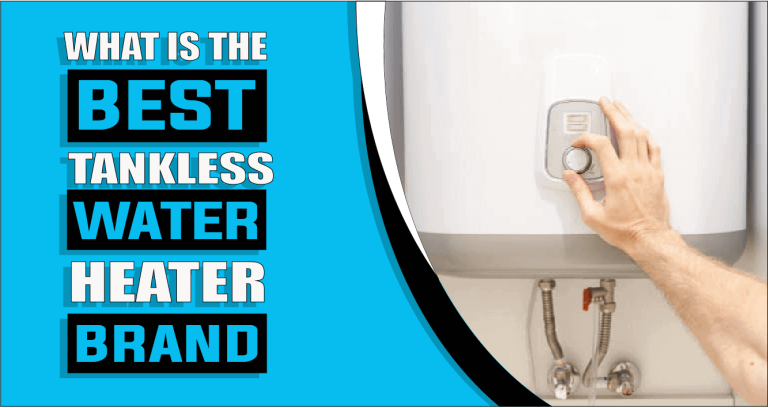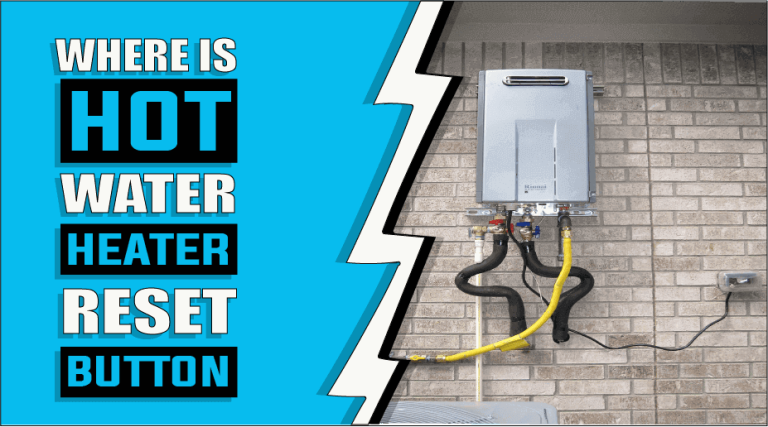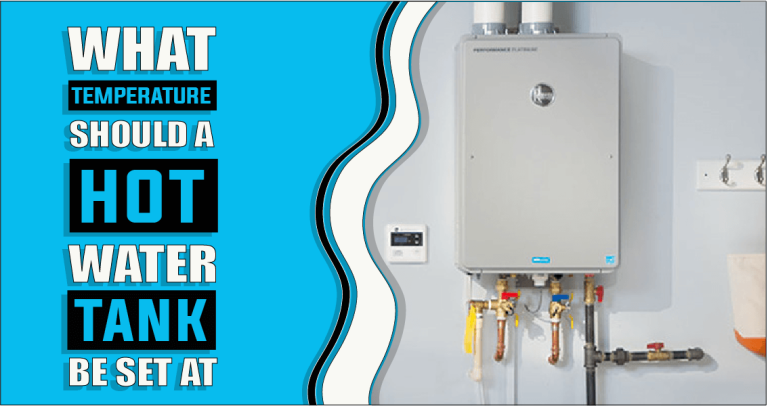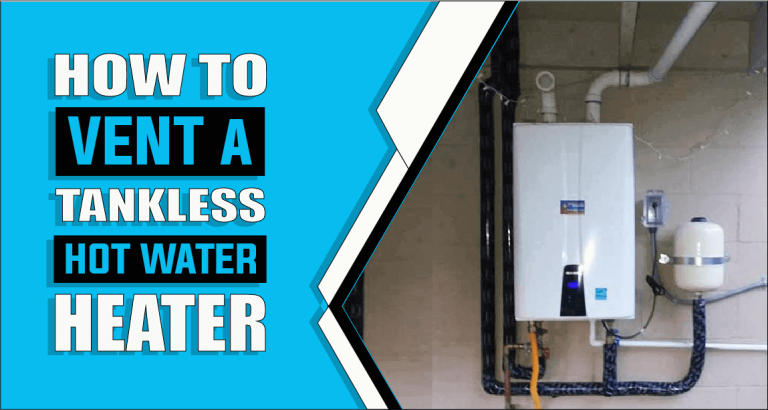How To Install Tankless Hot Water Heater – The Truth Reveals
Do you dread the thought of having to deal with a cold shower in the middle of winter? Don’t want to experience those bone-chilling moments again this season? It might be time for you to install a tankless water heater in your home! Not only do they provide warmth and comfort for those icy nights, but heating water with a tankless water heater can also be incredibly cost-effective. Even though installation may seem intimidating, we’ll show you how easy it can be by guiding you through every step until after your new heater is up and running smoothly! With our help, you’ll find out that installing a tankless water heater isn’t nearly as intimidating as it seems. So get comfy and let’s get started on how to install a tankless hot water heater, by the end of this blog post, you’ll be feeling warm and cozy in no time at all!
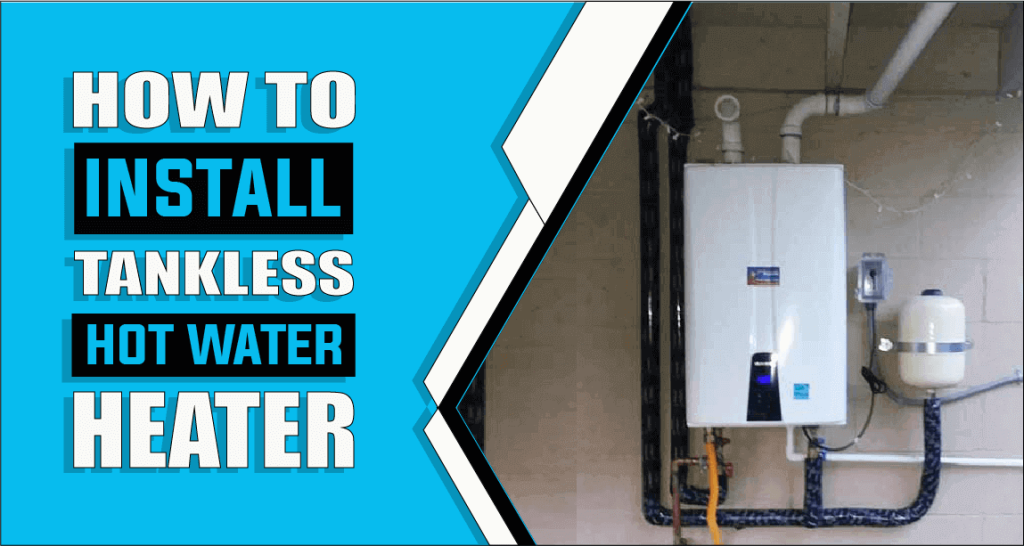
Let’s Discuss how to install a tankless hot water heater
Tankless water heaters provide an ample supply of hot water, and getting one installed is a breeze! All you need to do is turn off the main power switch before connecting your new gadget. Then attach both cold and warm connections followed by flushing out any dirt in the pipes with clean tap water. Finally, connect it safely into place so that your endless stream of steaming showers can commence!
Once everything is set up and ready to go, make sure all connections are secure before turning the power back on. Overall, installing a tankless water heater is an easy process that will not only provide more efficient heating but also save money over time by reducing energy costs associated with traditional tanks. With careful preparation and attention to detail, anyone can have a successful installation of their new tankless unit in no time!
Preparation for Installation
Installing a tankless water heater can take the sting out of those cold morning showers! With just a few easy steps, you’ll be ready to enjoy endless streams of hot and cozy water for years to come.
1: Gather Necessary Supplies Needed for the Installation
When preparing to install a tankless water heater, it is important to ensure that you have all the necessary supplies ready. This includes shutoff valves, pressure regulators, drain pans, and any other items required for the specific model of water heater that you are installing.
Having these supplies readily available will ensure that the installation process runs smoothly and is completed in a timely fashion. Additionally, it is always advisable to have extra supplies on hand in case something goes wrong or there is an unexpected need for additional items during the installation process.
2: Shut Off Existing Water Supply Safely
Before beginning work on installing a tankless water heater, it is essential to turn off the existing water supply to prevent any accidents or leaks from occurring during the process. This can be done by turning off the main water supply valve located near your home’s external source of water or by shutting off each pipe that feeds into the house.
Installing the Tankless Hot Water Heater, Step-by-Step Guide
Installing a tankless water heater is the key to giving your home luxurious, near-limitless hot water but how do you get it done? Don’t worry; we’ve got all the steps of this exciting process broken down for you here. Ready to experience ultimate convenience and comfort in every shower or sink washing session from now on? Get started with our easy install guide!
1: Mount the Unit
Mounting the unit onto a wall or other support structure securely is an important first step in installing a tankless water heater. To ensure it is secure and stable, the mounting surface should be flat and level. Make sure the mounting screws are properly tightened and the mounting flange can accommodate the size of the heater.
2: Connect Inlet and Outlet Fittings to the Unit
Connecting inlet and outlet fittings to the unit involves attaching flexible hoses to both fittings, ensuring that they are properly secured with clamps designed for this purpose. It’s important to remember that some models may require additional fittings such as pipes or elbows for proper alignment, so make sure to check what requirements your particular heater has before beginning installation.
3: Connect Gas Line
Connecting the gas line to ensure the proper fuel source for the heater begins by connecting an appropriate-sized gas line from your main gas supply line to the tankless water heater’s inlet fitting. Take into account that natural gas requires different piping than propane lines; make sure you are using the right type of pipe and connectors for your particular fuel source.
Furthermore, install an approved shutoff valve near the connection point between your main gas supply line and the tankless water heater’s inlet fitting to easily control gas flow into your unit.
4: Connect The Electrical Power Supply
Connecting the electrical power supply to the heater will depend on what type of power connection your model requires; whether it be direct wiring or plugging into an outlet box via an extension cord will vary based on what kind of tankless water heater you have purchased.
If using direct wiring, consult with a certified electrician about how best to hardwire this appliance into your home’s electrical system as well as how many amps are needed for optimal performance of your model before attempting any wiring yourself.
5: Test System With a Water Pressure Gauge
Testing the system with a water pressure gauge to ensure proper operation after installation is complete is an integral part of making sure everything was implemented correctly during installation. Checking pressure readings after installation can help identify problems early on rather than having them arise during use later down the line where they could potentially become much more costly or hazardous.
With a quality water pressure gauge connected directly to both inlet and outlet pipelines, turn on all necessary valves while monitoring pressure readings. They should stay within safe operational limits determined by manufacturer specifications.
If pressure readings go beyond safe operating levels, re-check all connections and valves for potential leaks or faulty equipment before adjusting settings accordingly per manufacturer guidelines. Only then can you rest assured that you have successfully installed your tankless hot water heating!
Cautious Measures After Installation and Care Tips for Tankless Hot Water Heaters
A tankless water heater can bring a dramatic, cost-saving change to your home. But with this kind of upgrade comes great responsibility. Taking the right precautions and care measures will ensure that you reap every benefit from your new system!
1: Check for Any Potential Leaks in System
Checking for any potential leaks or other abnormalities in system operation before use is essential to ensure the longevity and efficiency of tankless water heaters. It is recommended to visually inspect the connections and hoses, as well as check all fixtures around the heater itself, every 6 months. This can help identify any potential issues with the heater or its components before they become a bigger issue.
Moreover, if any signs of wear or damage are found, it is best to replace the affected component immediately. Additionally, it is also important to regularly inspect the thermostat and ignition systems for proper operation; this should be done at least once a year.
2: Regular Maintenance Of Tankless Water Heaters
Regular servicing and filter cleaning are important tips given by manufacturers on how to properly use or maintain tankless water heaters. Not only will regular maintenance keep your water heater operating efficiently, but it can also extend its lifetime by preventing rust and corrosion from building up in the system.
Furthermore, depending on how hard your local water supply is, you may need to clean out your filters more frequently than usual; this is especially pertinent if there has been an increase in sediment buildup in recent times. As such, it is best to routinely inspect filters every couple of months; if they appear dirty, replace them with new ones as soon as possible so that your unit remains efficient and safe throughout its lifespan.
Benefits of Tankless Hot Water Heaters
Are you tired of waiting for an eternity to get hot water? With a tankless heater, the days of long waits are over! Enjoy instantaneous hot water with the huge benefits of this energy-efficient system and make your life easier.
1: COST SAVINGS
Tankless water heaters provide excellent cost savings for homeowners, as they provide a continuous supply of heated water without having to pay for large amounts of hot water storage. As tankless water heaters only activate when hot water is demanded, it conserves energy and decreases utility costs by avoiding wasted energy usage. Depending on the size of the home and the frequency of hot water usage, the average household can save anywhere from 15 to 30 percent annually in utility costs with a tankless hot heater system.
2: SPACE-SAVING
A major benefit of tankless water heaters is their small size and space-saving design. Tankless systems are significantly smaller than traditional models, taking up roughly one-third to one-half the space, making them ideal for smaller homes or tight spaces such as closets. Additionally, because they do not require additional storage tanks, they free up valuable floor space in a basement or utility closet.
3: ENERGY EFFICIENCY
Traditional tanks have an efficiency rating between 50% – 70%. In comparison, tankless units boast impressive efficiency ratings of up to 98%. This means that nearly all of their energy use is converted into usable heat. Furthermore, since tankless systems only activate when hot water is demanded instead of continuously running throughout the day or night, they also avoid wasting energy during off-peak hours or times when no one is home. All these factors result in far lower overall utility bills than those incurred with conventional models.
Frequently Asked Questions
Yes, the installation of tankless water heaters is possible with the right tools and knowledge. However, if you are not comfortable with electrical work or plumbing it is recommended to call a professional.
When it comes to installing a tankless water heater, it is important to make sure you have all the necessary tools and supplies. This includes safety equipment such as gloves, eye protection, level, electric drill and bits, pipe wrench, screwdriver set, and Teflon tape. You also need plumbing components such as shutoff valves, pressure-reducing valves, an expansion tank, supply line connectors, and installation parts. It is also important to make sure that you have read the installation instructions thoroughly before beginning installation.
Electric tankless water heaters need to be wired into the home’s electrical system and connected to a cold water supply line. However, it is important to make sure you follow manufacturer specifications for wiring and installation as well as keep all safety measures in mind during installation.
Yes, as long as you understand the installation instructions and have all the necessary tools and supplies. It is important to make sure that you follow safety procedures at all times when working with electrical components to avoid any accidents or injuries. It is also best to call a professional if you are feeling uncomfortable or unsure about any part of the installation.
Yes, PEX tubing is recommended for tankless water heater installation as it is more durable and resistant to temperature changes compared to other types of pipes. Additionally, a flexible pipe will make installation easier in tight spaces or around curves. Always consult with a professional plumber to discuss the best option for installation based on your specific needs.
Yes, you can replace your existing water heater with a tankless water heater. However, installation requirements will vary depending on the type of unit and what kind of fuel it uses. It is important to make sure that you know exactly what installation steps are required before purchasing a tankless water heater so that installation goes as smoothly as possible.
Conclusion
I hope you enjoyed this article on how to install a tankless hot water heater. Installing this energy-efficient appliance can be an easy process if you are comfortable following instructions. Just make sure to have all necessary tools and components in hand, for added peace of mind, consider getting help from your local plumber – then sit back and relax, knowing that years down the line you’ll still benefit from consistent heat at competitive rates.
Ella John is passionate about helping her readers make the best choice when purchasing a heater. She understands that selecting a heater can be difficult and strives to provide information to help make the decision easier. Ella’s website, Heatersinfo.com, provides valuable insight into heating trends and types of heaters and tips on how to care for them. She also advises selecting the right heater based on individual needs and preferences. Her expertise in electronics makes her an excellent source of knowledge, and she is confident that anyone who visits her website will find the perfect heater information for their needs. Ella’s dedication to helping others make educated decisions about buying the right heater is unparalleled, and she hopes to continue offering her expertise for many years. With Ella’s help, finding the perfect heater can be a breeze!

